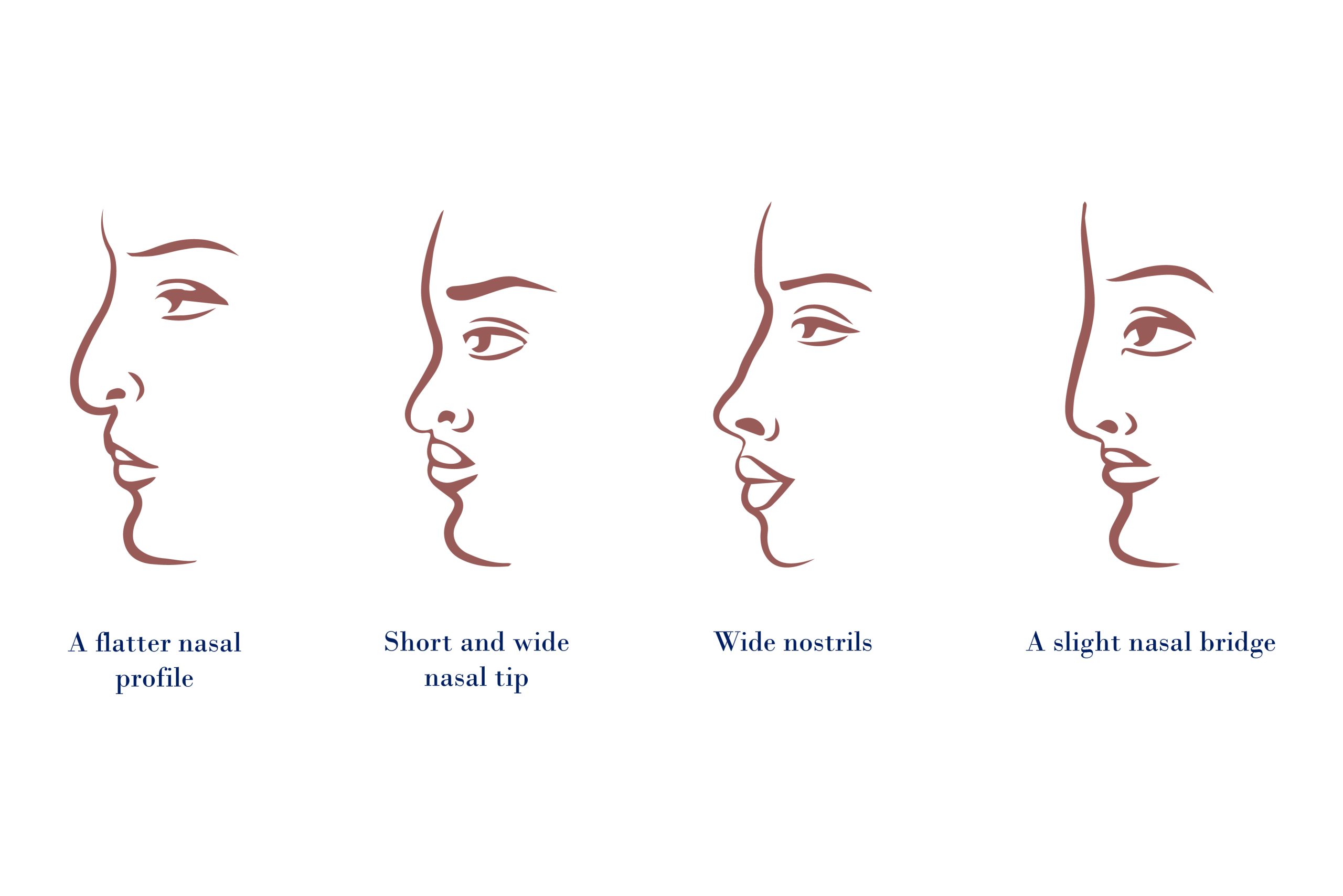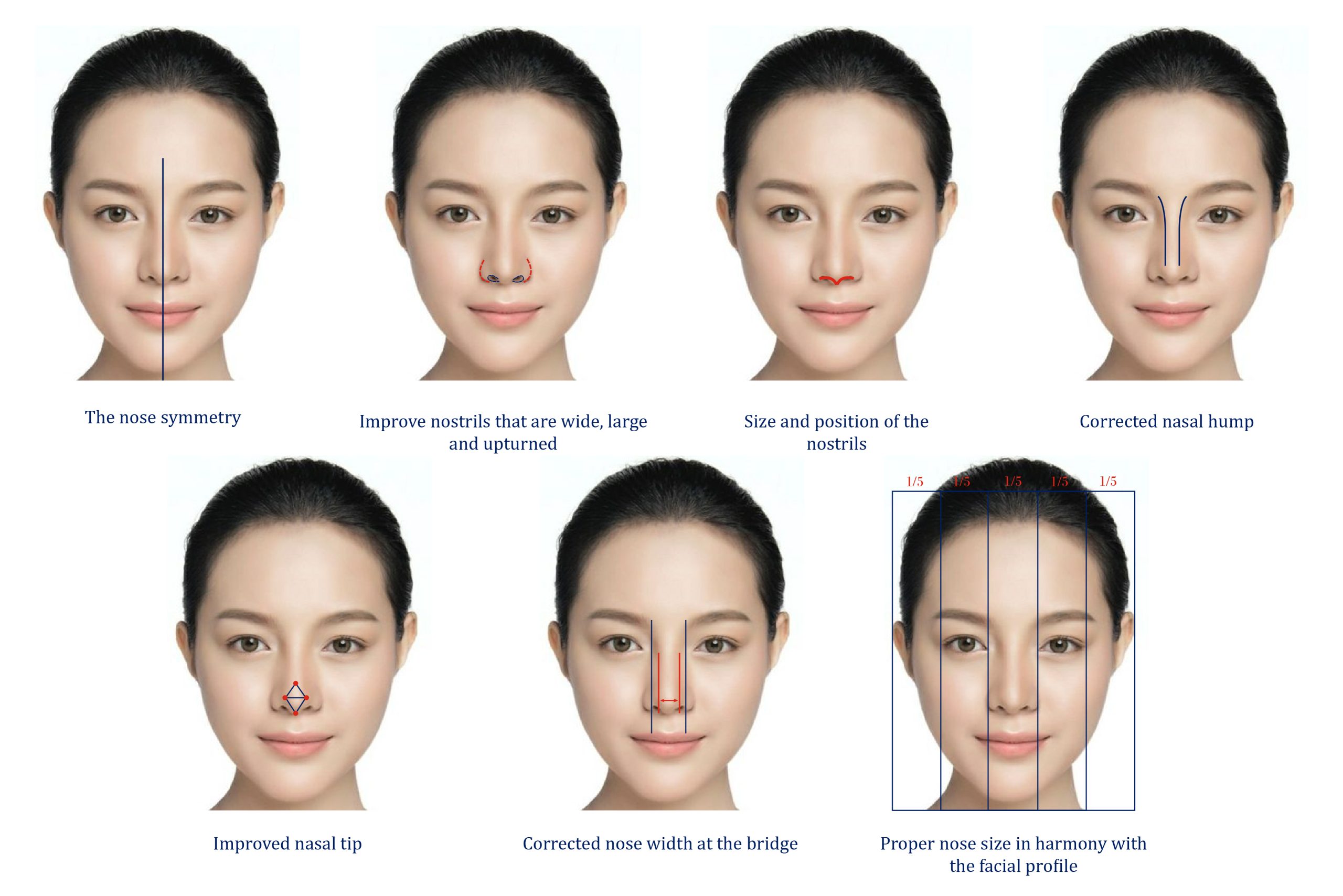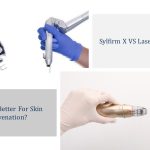The nose is the most prominent facial feature, playing a crucial role in harmonizing with the rest of the face. It’s often the first feature people notice. Procedures like rhinoplasty in Singapore and Korean rhinoplasty have become popular for enhancing both cosmetic appearance and functional performance.
Due to anatomical differences in nasal structure, some individuals may feel self-conscious about their nose and seek cosmetic alterations. In Singapore, nose surgery offers solutions tailored to these concerns, reshaping the nose to achieve a balanced harmony with other facial features.
Considering aesthetic preferences and ethnic anatomical differences, Korean rhinoplasty differs from Caucasian rhinoplasty. The ideal approach involves reshaping the patient’s nose without compromising their unique identity. For those interested in such procedures, nose plastic surgery Singapore provides options that cater to individual needs.
What Is Korean Rhinoplasty?
Korean rhinoplasty is a cosmetic procedure that reshapes the nose to produce visually appealing results. Sometimes korean rhinoplasty involves addressing a deviated septum, changing the shape of the nostrils, augmenting the nasal bridge, and enhancing the contour of the nose in relation with harmony of other facial features.
Korean rhinoplasty aims to enhance nose shape for improve appearance while retaining the specific characteristics unique to Korean ethnicity. Back in 90’s, the rhinoplasty procedure was based on the Caucasian nose shape. But today’s advancements in the rhinoplasty approaches embraces the heritage and creates a look that compliments the features of an ethnic group rather than just creating a universal nose design [1].
In addition to being used for cosmetic purposes, rhinoplasty may also be performed to improve nasal function. Some people may have a deviated septum or other nasal conditions that cause breathing impairment. In this case, it adjusts the nasal structure so that the patient’s breathing and quality of life are improved.
What Differs Korean Rhinoplasty To General Rhinoplasty?
People of Korean descent have the following nasal characteristics:

- A flatter nasal profile
- Short and wide nasal tip
- Wide nostrils
- A slight nasal bridge
While all types of rhinoplasty involve similar basic practices, it’s the anatomical differences between Asians and Caucasians that make Korean rhinoplasty a different approach.
The following table presents differences between general and Korean rhinoplasty:
|
General Rhinoplasty |
Korean Rhinoplasty |
|
| Nasal Bridge | Reduced | Augmented |
| Nasal Tip | Wide tip is reduced and refined | Wide tip is reduced and refined |
| Nasal Length | Shortened | Lengthened |
| Nasal Rim Alteration | Not required usually | Corrected by cutting excess tissue |
| Tip Projection | Reduced | Augmented |
How Is Korean Rhinoplasty Performed?
The Korean rhinoplasty procedure can be performed under general anesthesia (the patient is totally unconscious) or sedative (the patient is semi-conscious) anesthetic. The type of anesthesia depends on the patient’s health status and the particulars of the surgery.
In the case of implants, the surgery takes between 2 to 3 hours, and for a cartilage graft, it takes about 4 hours.
After anesthesia, an antiseptic solution is used to prep the face. Freezing medication, which usually involves local anesthesia, is injected into the nose to further anesthetize the surgery area.
During Korean rhinoplasty procedure, the surgeon makes incisions to access the underlying cartilage and bone. After this, the appearance of the nose is improved using various surgical maneuvers. The most common ones include [3]:
 1. Bridge Augmentation With Cartilage Graft:
1. Bridge Augmentation With Cartilage Graft:
This procedure involves using a patient’s own cartilage to augment the bridge. Cartilage grafts are harvested from the nasal septum and the concha bowl of the ears. They can also be taken from the rib. After harvesting, the cartilage is placed in the low region of the bridge to create an augmented look.
2. Bridge Augmentation With Implants:
The most common implants used for the augmentation of the nasal bridge include solid silicone and Gor-Tex implants. These implants are placed in the upper bridge at the lowest area.
3. Refining The Alar Base:
If your nostrils look too rounded or your nostril area is too wide, then this can be corrected with alar base refinement. During this technique, a portion of tissue from the nostrils is removed. The nostrils are sutured in a new position, which makes them appear narrower.
4. Increasing Nasal Length:
Koreans often have a short nasal length, which can make their nose look droopy. Increasing the nasal length involves harvesting the septal cartilage, which is secured to the tip’s cartilaginous framework. This pushes the nasal envelope outwards, thus creating a more desirable shape.
5. Refining The Nasal Tip:
In Korean patients, a combination of the thickness of the skin and weak cartilage makes a bulbous nasal tip. You can achieve a balanced facial appearance through nasal tip refinement. This technique involves trimming, bending, and repositioning the cartilage.
6. Increasing Tip Projection:
In this technique, the nasal tip is augmented so that the nose protrudes from the face. This involves taking the cartilage from the septum, which is then secured to the tip’s cartilaginous framework to increase tip projection.
7. Nasal Bone Repositioning:
During this technique, the nasal bones are broken in a surgically-controlled way in order to bring them close.
After performing all modifications, the surgeon closes the incisions and applies a nasal splint or dressing.
What Can Korean Rhinoplasty Fix?

Korean rhinoplasty can be used to correct a variety of cosmetic issues related to the nose. Some of the most common concerns that can be addressed through rhinoplasty include:
- The nose symmetry
- Improved nostrils that are wide, large, and upturned
- Size and position of the nostrils
- Corrected nasal humps
- Improved nasal tip
- Corrected nose width at the bridge
- Proper nose size in harmony with the facial profile [4]
Is There Anything I Should Avoid Before Undergoing Korean Rhinoplasty?
Prior to your Korean rhinoplasty, your plastic surgeon should give you instructions to follow. These instructions may include the following:
- Undergoing some routine tests to ensure that it is safe for you to undergo surgery.
- Stopping the use of blood thinners.
- Avoiding cigarettes two to three weeks before and after undergoing rhinoplasty to accelerate the healing process.
What To Expect After Getting Korean Rhinoplasty?
Following Korean rhinoplasty, you will probably experience mild to moderate pain, which can be managed with prescription pain relief. You may also experience some discomfort (feeling of having a stuffy nose) for the first few days. Bruising and swelling around the eyes are also expected following the procedure.
How To Take Care of The Wound?
- You will be allowed to go home after the effects of the anesthesia have subsided.
- At the time of the surgery, a nasal splint or dressing will be placed, which should be dry and left undisturbed. A nasal splint should be worn for one to two weeks to protect your newly shaped nose.
- Your surgeon may prescribe oral and topical antibiotics along with oral analgesics.
- To decrease swelling and discomfort, sleep with your head and back elevated at 30 degrees.
- Rest properly and avoid exertion.
- Avoid using glasses during this time. If you wear glasses, make sure they do not touch the nose.
How Many Days Will I Completely Heal After The Procedure?
- The swelling usually resolves within two to four weeks. It can take up to 6 months for the full resolution of the swelling.
- Nasal congestion improves within the first week.
- You can return to work (non-strenuous activity) within one to two weeks.
- Bruising significantly improves within two weeks [5].
Am I A Suitable Candidate For Korean Rhinoplasty?
Suitable candidates for Korean rhinoplasty are men and women who want to improve the appearance of their nose.
You’re an ideal candidate for Korean rhinoplasty if you:
- Have a broad and bulbous nasal tip
- Want to increase the projection of the nasal bridge
- Have a deviated septum
- Have dorsal hump on the nose bridge
- Have fleshy and wide ala
- Short columella
- Are in good physical health
- Are non-smoker
You can also schedule a consultation with a certified plastic surgeon to know whether you’re a good candidate or not.
Always Consult A Certified Plastic Surgeon Before Deciding To Get Korean Rhinoplasty:
The goal of Korean rhinoplasty is not to reconstruct a nose that mimics that of another culture. Rather, the goal is to sculpt the nose without losing your ethnicity and natural features. Achieving this highly depends on the expertise of a surgeon.
It is always crucial to consult with an experienced and certified plastic surgeon who can help you achieve aesthetic goals while maintaining your ethnic identity. The surgeon will first examine your medical history, discuss your aesthetic goals, and the type of surgical maneuver in relation to your facial features and dimensions.
Final Thoughts:
Being the focal point for the face, a beautifully shaped nose creates an aesthetically-pleasing look. There are many nasal differences between Koreans and Caucasians. People of Korean descent often have a flat nasal profile. Korean rhinoplasty augments the appearance of the nose with the aim of achieving a nose shape that is aesthetically desirable in Asian culture. It is always essential to have a detailed medical consultation with a certified plastic surgeon so that you can undergo Korean rhinoplasty to achieve a nose that complements with the facial features.
References:
[1] Ishii CH. Current Update in Asian Rhinoplasty. Plast Reconstr Surg – Glob Open 2014;2.
[2] Li Z, Frank K, Kohler LH, Moellhoff N, Giunta RE, Cotofana S, et al. Anatomic Differences Between the Asian and Caucasian Nose and Their Implications for Liquid Rhinoplasties. Facial Plast Surg Clin North Am 2022;30:167–73. https://doi.org/10.1016/j.fsc.2022.01.008.
[3] Bergeron L, Chen P. Asian Rhinoplasty Techniques. Semin Plast Surg 2009;23:016–21. https://doi.org/10.1055/s-0028-1110097.
[4] Fakhro A, Wagner RD, Kim YK, Nguyen AH. Milestones of Asian Rhinoplasty. Semin Plast Surg 2015;29:213–8. https://doi.org/10.1055/s-0035-1564821.
[5] Xiang H, Dang W, An Y, Zhen Y, Li D. The latest trends in Asian rhinoplasty. Chinese J Plast Reconstr Surg 2022;4:82–90. https://doi.org/10.1016/j.cjprs.2022.04.002.







